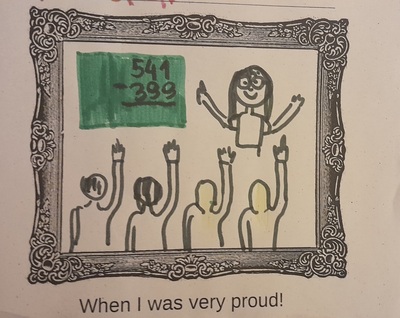
Storytelling and storybooks in the primary classroom
Welcome to one more of my obsessions: the story in the classroom, be it a story from the coursebook, a video, a storybook or even a thing that I invent myself, just to sell my ‘product‘. A story is not only the type of an activity that we introduce because of its many benefits or because we want to prepare our students for the YL Cambridge exams but also because the story can be a way and the means of developing the young children’s language skills, reading and writing, speaking and listening but also their grammar and vocabulary.
I have been using stories for ages and I am not exaggerating when I say that this is one of my favourite teaching tools and different storybooks characters, Marvin, Barry, Pete the Cat or Splat the Cat or Peppa, are like my best mates.
‘What’s new?‘, one could ask.
In this academic year (four months so far), I have been involved in teaching the British National Curriculum, KS 3 to my two wonderful groups who are an amazing but mixed bunch, especially when it comes to their actual English skills. One of my main aims is developing my students reading and writing skills, preferably fast (yes, yes, I know, nothing happens fast) while working with a very mixed ability group, ranging from complete beginners to A1+ children. Stories have been one of the many ways of doing and I decided to share a few examples of what we have done, hoping that they can serve as a source of inspiration, for all kinds of classes, EFL or ESL.
The general idea
The way these five stories were used in the primary classroom follow the same pattern
- pre-book: looking at the cover of the book, reading the title, introducing the main character, asking some questions about it, trying to predict the story, introducing and practising the key vocabulary.
- while-book: reading / watching the story, sometimes with pauses to check understanding, sometimes to involve the kids through gestures, sometimes through the phrases, if they are used repeatedly.
- post-book: a variety of activities related to the content of the story or to the grammar or vocabulary of the week in which the story was introduced.
And this is when the post starts to make more sense, I hope, because I am going to share here five different stories and five story-related, follow-up activities that I used in the last few months.
Hen’s pens and Let’s practise vocabulary!
Hen’s pens is a story, one in the series published by Usborne, a lovely resource with the Ted in a red bed, Fat Cat on a mat and Big Pig on a dig. I usually use them a bit later, with slightly more advanced students, in shared reading sessions (and there probably should be a post about that) but this time, I wanted to introduce a longer story, a video story and a rhyming story, specifically to have kids practise noticing rhymes.
In the follow-up of the story, we completed a very simple reading task, in which we put the words into pairs by colour-coding them and then using the chart to practise reading. You will have also notice a colouring page in the handout. This was an additional task for the kids, only for those who like colouring.
Pete the Cat and Let’s speak!
Pete the Cat is very famous in the EFL circles and the story about rocking in the school shoes is an absolute hit. This is my personal way of teaching Present Continuous ever since I have seen the video for the first time and this year, not quite for the first time, I used it also to introduce the school vocabulary, verbs and places.
In our lesson, apart from watching, singing, miming and even re-enacting Pete’s day at school, we also followed up with a speaking activity in which the kids had to create their own sentences in the Present Continuous. They had the main verb forms, mostly taken from the story, accompanied by visuals to support speaking (in most cases, the kids were unable to read yet) and their task was to finish the sentence by drawing something. ‘I am eating…a pizza, an apple, a cookie, a banana’, according to their preferences. Later on we compared our sentences, creating our own day at school. The handout served as preparation for speaking.
Again, those children who were interested, were given a second handout to colour.
Marvin Gets Mad and Let’s practise grammar!
Marvin is, no doubt, one of my favourite characters and he’s been present in my classroom for about fifteen years now (wow!). ‘Marvin Gets Mad’ by Joseph Theobald is a great story for feelings and for learning about controlling emotions but this time round I decided to use it to reinforce the grammar behind the Present Continuous.
In the follow-up task, which was quite a stretch from the plot of the original story but it was exactly what we needed to practise the Present Continuous and to reinforce the idea of the suffix -ing. The kids had to add the suffix to all the sentences and then read them and match them to the pictures of a particular sheep.
Zog and Let’s take some notes!
Zog by Julia Donaldson was a good lesson, too. We focused on revising the body parts but we also did a lot as regards the language practice, as regards the structures we already learnt (‘I can…fly, catch a princess, breathe fire) and a few structures that were used repeatedly in the story (‘What’s the matter?’ ‘I can help you’ ‘Thank you’). While we were going through the story, the children helped me produce all the key language.
After we were done with the story itself, we ‘took notes’ about the story. All the kids got their copy of the handout and we went on through it: tracing the lines, reading the lines and completing them with our ideas. As usual, some of the lines are actually very restricted (‘Zog is a dragon’), some are more open-ended (‘He can…fly, breathe fire, catch a princess, help’), the others – even more. (‘He is…green, big, small, happy, sad, scared’). The final two lines are for tracing and for circling, depending on whether you liked the story or not. This time I included a small picture of Zog for everyone and some kids took time to colour it after they were done with writing.
Ling and her proud memory and Let’s draw!
Ling is a girl from one of the stories in our coursebook, Global English 3, in a series on memories (a sad memory, a happy memory and a proud memory) and I actually loved teaching all three. The story was quite challenging for my kids in terms of the language and I just wanted a general understanding of the main facts. After we talked about the picture and listened to the story, I did a short Yes / No activity regarding the content. This was followed by a note-taking activity, similar to the one we did with Zog, but it was substantially shorter and more limited in terms of creativity. However, this was only because the real star of the lesson was the drawing activity.
The word ‘proud’ was a new concept to us and I really wanted to make it personal, mostly because it has a huge potential and it is a good word to have at your disposal in the classroom. With the help of my T.A. we explained what it means, we gave examples and suggested some ideas for the kids, based on our shared experiences such as preparing for the Christmas show, doing difficult exercises in class and so on. I showed my students my example (below) and I let them draw.
Admittedly, the lesson (or this project) did not involve a huge lot of language production but it was a beautiful moment, nonetheless. And a very necessary one, too! Some children knew straight away what they were proud of, some others needed to take time to come up with an idea. And they did! Even those who started their search with a desperate ‘I don’t know!’.
My example is below and showing it to my class was another special moment and, guess what, they got the idea straight away! Because when we are doing something very, very difficult in Maths and my students keep raising their hands and everyone wants to give the answer, I am very proud (based on real events:-).

Coda
These are just a few ideas of what can be done in class when a story is involved. One of many ideas!
Happy teaching!

